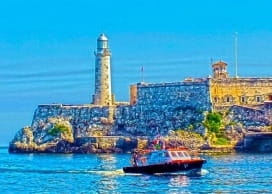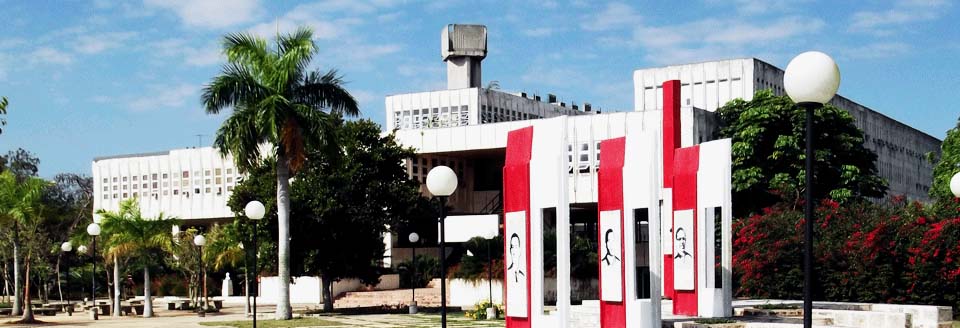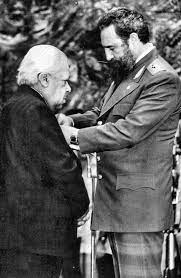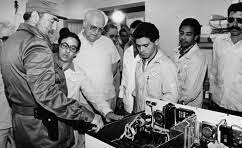
Havana ephemeris. September 7th.
1944. The notable composer Eduardo Sánchez de Fuentes dies in Havana.
![]()
From his childhood he felt admiration for music. After him, when he was twelve years old, he began his musical apprenticeship at the Conservatory of the Dutch pedagogue and pianist Hubert de Blanck, based in Cuba. Later he was a student of teachers Carlos Anckermann and Ignacio Cervantes. The latter was the national music personality who most influenced his career. At the age of 18 he composed the Habanera Tú, a piece that had international significance.
In his musical work he created zarzuelas, operettas and operas.
In 1910, together with other intellectuals, he founded the National Academy of Arts and Letters, an institution where he became president from 1930 to 1942.
He was a critic for the newspaper El Mundo and the magazine Pro Arte Musical, work in which he showed great seriousness, as well as in his collaborations for El Fígaro, El País, Diario de la Marina, Bulletin of the National Archive and Annals of the Academy. National Arts and Letters.
His birth occurred in Havana on April 3, 1874.
1971. Miguel Ángel Macau García dies in Havana.
He studied elementary and high school in Matanzas. He became known as a poet in that city. He was editor of the magazine El Estudiante and the newspaper La Lucha. He graduated with a Doctorate in Civil Law from the University of Havana in 1914. As a poet and playwright, he was awarded three times in the Floral Games of the East (1914, 1916 and 1919). He traveled to the United States twice and later moved to Havana, where he worked as a municipal judge in Vedado. In 1934 he is appointed accountant of the Executive Committee and the Supreme Assembly of the Cuban Red Cross, of whose Cuban Red Cross magazine he was co-director since 1937. He was the author of legal works and musical compositions. Shortly before his death, he received a tribute from the Ateneo de La Habana, of which he was a member.
His birth took place in Matanzas on January 1, 1886.
1976. In the town of San José de las Lajas, then province of Havana, the Higher Institute of Agricultural Sciences is founded.

With the current name of Universidad Agraria Fructuoso Rodríguez, it is one of the main institutions of Cuban higher education in the agricultural sphere.
Its main mission is to guarantee the comprehensive training and continuous improvement of professionals with high quality and relevance, developing scientific activity and university extension, with emphasis on the agricultural sphere, responding to the needs of the country's sustainable development. It maintains a close relationship with the centers of the Scientific Complex and in correspondence with the universalization of knowledge within the framework of the Programs of the Revolution, with a marked internationalist vocation, in a revolutionary and cohesive environment that its workers and workers guarantee with high responsibility and professionalism. students.
1981. At the proposal of the Council of State, Commander in Chief Fidel Castro imposes the José Martí Order on the National Poet Nicolás Guillén. The ceremony took place at the Palace of the Revolution and the high decoration awarded was the first time it had been given to a Cuban intellectual.

Guillén was the founding President of the Union of Writers and Artists of Cuba. He was also a member of the Central Committee of the Communist Party of Cuba and a deputy to the National Assembly of People's Power.
As a revolutionary intellectual he participated and represented Cuba in various international events and also offered conferences and recitals in different parts of the world.
1987. The Immunoassay Center (CIE) is inaugurated by Commander in Chief Fidel Castro in Havana.

He points out: “Today we have here, really, a true jewel, I call it that. I think the conception of creating a research center and at the same time a production center was very happy, and to produce not only prototypes, but also to produce equipment with a certain massiveness”.
The facility consists of two scientific-productive groups: Immunochemistry (develops and produces new diagnostic techniques) and Instrumentation (with the same process in equipment and instruments for these techniques).
The CIE investigates new diagnostic technologies, obtaining reagents, instruments and equipment; develops software, provides technical advice and trains the personnel who will work with the equipment and programs.